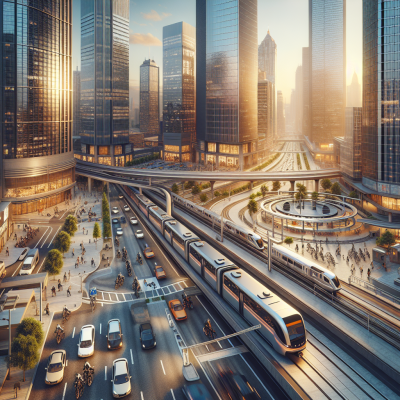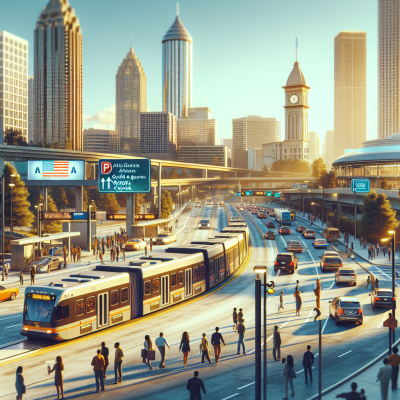
Local Insights: Atlanta’s Transportation Culture
Commuter Experiences
Atlanta’s commuters navigate a complex and evolving transportation network daily, balancing the challenges of traffic congestion and limited public transit options with the opportunities presented by a city continuously seeking improvement. The average Atlanta commuter experiences both the hustle of city life and the charm of its unique neighborhoods.
-
Daily Commutes: For many Atlantans, commuting is a major part of their day. Some spend upwards of an hour traveling one way, especially those residing in suburban areas. This has led to a strong car culture fueled by the city’s sprawling layout and the limited reach of the current public transit system. Interstate 285, locally known as The Perimeter, often serves as a major artery for those commuting from surrounding areas into the city.
-
Public Transit: While cars dominate, an increasing number of residents are turning to public transit options like MARTA for their reliability in bypassing traffic and lowering commuting costs. The MARTA rail and bus services are frequently praised for their timeliness and coverage within core areas, although there are calls for expansion into more suburbs to accommodate more users.
-
Carpooling and Ridesharing: Owing to persistent traffic issues, carpooling and ridesharing services like Uber and Lyft have seen a rise in popularity. This communal commuting method helps reduce the number of vehicles on the road and provides a convenient, cost-sharing alternative to driving solo.
Voices from the Community
The voices within the Atlanta community form a rich tapestry of opinions and insights that unveil the personal impact of transportation on daily life. Here’s what some residents have to say:
-
Longtime Commuters: Many lifelong inhabitants discuss how commuting in the city has changed over the decades. The traffic nowadays! exclaims a senior resident, reflecting a common sentiment that, while infrastructure has improved, so has traffic volume.
-
Young Professionals: A significant portion of the younger population appreciates recent efforts to enhance biking infrastructure, though concerns about safety and connectivity remain.
-
Environmental Advocates: These voices often criticize urban planning for prioritizing cars over people. They actively participate in discussions advocating for greener and more sustainable transportation solutions.
-
Local Business Owners: Small business owners express a mix of frustration and optimism about the city’s transportation system. A more accessible transit would mean more foot traffic and potential customers, suggests one local café owner.
Balancing Growth with Accessibility
As Atlanta continues to grow, striking a balance between expanding urban development and maintaining accessibility is paramount. City planners and developers face the challenge of managing population growth alongside burgeoning transportation demands.
-
Infrastructure Expansion: To accommodate the escalating population, projects like highway expansions and improvements to public transit routes are in the works. However, community members express a desire for these developments to proceed without sacrificing green spaces and historical neighborhoods.
-
Innovation in Transportation: Technology plays a central role in Atlanta’s transportation future, from app-based solutions for navigating public transit to environmentally friendly vehicles reducing the city’s carbon footprint.
-
Community Engagement: Engaging the community in urban planning discussions is essential. Feedback loops through local meetings and online platforms empower residents to voice their concerns and desires, helping to ensure developments align with public needs and expectations.
Ultimately, achieving growth while preserving accessibility hinges on inclusive planning, innovative solutions, and a commitment to enhancing the quality of life for all Atlantans. Through collaboration and engagement, Atlanta can evolve its transportation landscape to meet the needs of both current residents and future generations.








